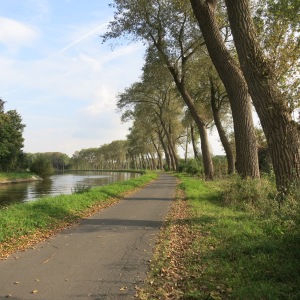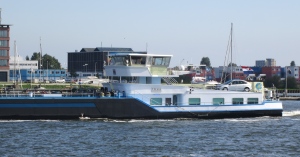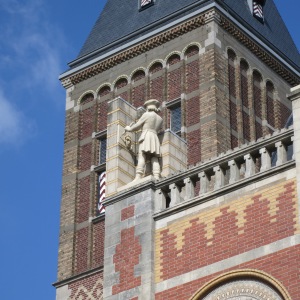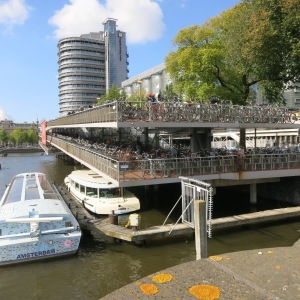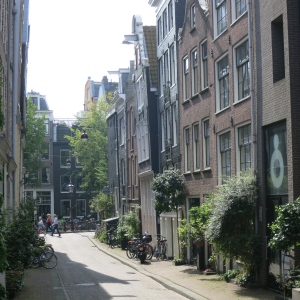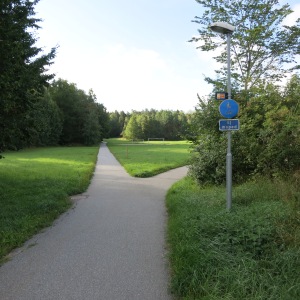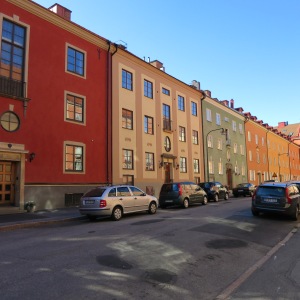Our time in Sweden has been divided between exploring Stockholm, which you read about in our last post, and exploring outside Stockholm, which we’ll share in this post.

Helsinki, Finland. The entrance to Central Rail Station.
A popular short jaunt from here is Helsinki, Finland. There are multiple ferries that make the trip each day, often with an additional stop or two. One reason it is popular is that locals can do duty-free shopping in the international waters between countries. We left Stockholm in the late afternoon, arrived in Helsinki the next morning, and returned to Stockholm over the following night. The boat generally looked like a cruise ship: many stories with all kind of berths, expansive dinner buffets, bars with karaoke, and gambling. The biggest difference was that a couple decks were dedicated to cars as many people use the ferry to get their car to another country. The extended hours of daylight allowed us to watch the long exit and entrance from the archipelagos on either end as we came and went. With just one short day in Helsinki, we set out to amble around. We found five icebreakers at dock, one 50 years old and the others more recent. We enjoyed the old ornate architecture on many buildings and saw several remarkable churches (you can see them too in our pictures). One was the Kaampi Chapel of Silence, an egg-shaped building in the middle of a square. It is supposed to be completely silent inside. We joined the other international tourists, all cringing at the small noises made by a camera, a jacket zipper, or brushing against a pew. We had an excellent vegetarian meal at a place that was packed with locals on their lunch break. As the clouds thickened and thunder started to rumble, we headed to the National Museum, which turned out to be much more than a good place to stay dry. It was fantastic, covering geology to prehistory, through to modern times. Megan was taken with cases full of stone boat axes carved about 4500 years ago; they mostly appear to be unused as axes but their function is unknown.

Another beautiful granite island in the Baltic
A trip to Sweden wouldn’t be complete without spending time on the Baltic Sea. The Stockholm archipelago has 30,000 islands and islets and is only one of several archipelagos that make up the east coast of Sweden. The Baltic provides unique sailing: no tides, very low salinity, and lots of traffic. Land is rising as fast as one centimeter each year or three feet each century, which means historic and future waterways are significantly different from today.

Passing through the narrow Baggenstäket channel near Stockholm, it is less than 20 meters wide here!
In addition to several day trips, Sven took us sailing around part of the Baltic for a week on his 37-foot Hallberg Rassey. School just started and summer vacations ended (many Swedes take much of August off), so we were in low season. This meant we able to pull into marinas in the late afternoon and not worry about finding a place. It is hard to describe our experience in words and pictures; they always seem to fall short. We saw thousands of small islands of smooth granite, some with one or a few buildings, many uninhabited. Over the course of our trip, we probably also saw a thousand other sailboats. In the islands, we rarely were in a place where we didn’t see other sailboats (even though the high season was over!) Among the beauty of the islands are shallows and stones, which make it difficult to navigate, so we were constantly reviewing our position and direction on paper charts and GPS. Every good sailor wants to avoid the ignominious fate of colliding with a stone and having it named after you. South of Stockholm, we also visited the Sörmland Archipelago where islands are smaller, more frequent, less inhabited, and lower lying. Often the granite was streaked with orange/white veins and sparsely dotted with small evergreens, purple heather, and patches of moss. Coming back north, we started encountering islands with small farms on them, lush and verdant, or stands of timber next to meadows and pebbly beaches. Just a few miles from home, we went through a famously small passage leading back to Stockholm where the channel is less than 20 meters wide and as shallow as 4 meters. A bit nerve wracking in a sailboat with oncoming traffic in the twilight! Good thing Sven knows his boat and these waters very well.

Visby, Gotland.
Our farthest sailing destination was Gotland, which is a large island in the middle of the lower Baltic. Historically the island has been an important location for trade and agriculture. The people living there had tremendous wealth in the 12th century and at that time built up the town of Visby, complete with a 3.4 km defensible wall around the town, and a hundred large churches across the island. Many of the churches were neglected after the Reformation and stones that fell from them were taken to build new structures or reinforce the wall. In Visby, there are a dozen such churches that range from a single remaining column to a set of ribs and towers to the one still in use. The town of Visby is a UNESCO World Heritage Site, recognized as a complete medieval city with a nearly complete fortress wall. The city is full of narrow winding lanes lined with 800-year-old homes and commercial buildings (some wood, some stone), still maintained and utilized, often for their original purpose. We spent a couple days wandering, lost in the beauty, taking hundreds of pictures, and yet feeling like we were never able to capture it.

Inside S:ta Katarina in Visby, Gotland. Like all the churches it town, this was built in the 12-13th century. Post-Reformation, they fell into disrepair but the ribs still stand today.
The Gotland Museum provided an excellent overview of the history and detailed several of the battles and power struggles that colored Gotland’s past. Most of the forts we have visited in the Americas never saw battles. Visby is different; the protective walls were tried time and again. Battles have been fought at the base of Visby’s walls with enormous loss of life. Interestingly, most of the fighting was between the city dwellers and the farmers over trading rights. In the passage of time most stories have lost their connection to fact. Little can be proven and oral history lends itself to exaggeration. The museum exhibits reinforced how many questions are unanswered and invited us to speculate about the rationale for what concrete evidence remains. In the last century, archeological digs have added veracity to some of the tales. Mass grave excavations explained how many people died in battle, what kind of armor they were wearing, what tools they used to fight, and how healthy or unhealthy people were.

Megan and Eva walking into Eva’s apartment. It is on the top floor of this building. The builder tore down a decayed historic building on this location and built modern housing while recreating the original exterior appearance.
Eva invited us to see where she lives in Uppsala, a university town about an hour north of Stockholm. We really enjoyed Uppsala. The center is full of beautiful old buildings. A small river runs through town providing many quiet corners to reflect. Parks and gardens are full of interesting plants, as a testament to the life and work of Carl Linnaeus (or Carl von Linné as the Swedes know him). Students fill the cafes, eat at food carts, study in the grassy fields, and almost overwhelm the bicycle paths. Eva explained finding a place to park her bike in town is as difficult as finding a place to park a car and yet there are literally thousands of bicycle racks. Uppsala University was founded in 1477 and today has 40,000 students. The detail and maintenance on all university buildings was impressive. Uppsala also has the largest cathedral in Sweden. It was built between 1287-1435, and is as long as it is tall (118.7 meters or 389 feet). Inside there are many crypts (including Carl Linnaeus and Gustav Vasa), beautiful paintings, stained glass, and museum-like exhibits. The Cathedral or Domkyrka in Swedish is also used for coronations for today’s royalty.

Protective wall around Visby, Gotland. The wall was first constructed in the 12th century.
This trip reaffirmed for Jim that Sweden is one of the most beautiful places he has ever been. Gotland in particular is a place where beauty takes your breath away and overwhelms you around almost every corner. Our memories of this trip will be with us for a long time. You can see many photos of our attempts to capture it in the photo album. All new pictures have been added to the bottom.

A narrow passage on the way into Helsinki, Finland. The cruise ship before us looks like they will barely fit.

Now it is our turn to go through. Note the boat ahead of us making a hard turn–the channel can be like a maze.

Five icebreakers waiting for winter. Helsinki, Finland.

Helsinki, Finland is also full of interesting architecture. We found streets to be wider than in Stockholm and more modern buildings mixed in with the old ones.

Upenski Cathedral in Helsinki, Finland is the largest Orthodox Church in western Europe

Helsinki, Finland. Fun animal-like details in white on this old building.

Helsinki. The Kamppi Chapel of Silence provides a quiet place in the middle of a bustling city.

This graphic shows the 200ft fall of sea level over the last 8000 years on the Baltic. The land is rising. The Vikings had quite a different coastline than the one we see today.

Sven and Megan aboard Season.

Sandhamn, a popular old town on the edge of the Stockholm archipelago.
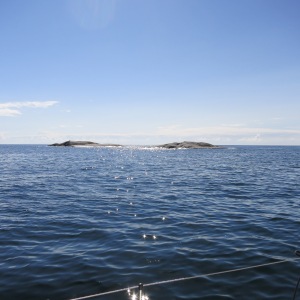
Navigating in the Baltic is difficult due to the quantity of small islets

Visby, Gotland.

A rough day on the Baltic, with waves breaking on this rare gravel beach in Gotland.
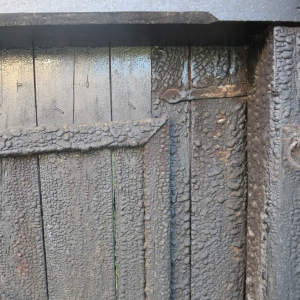
Visby, Gotland. Close up of the impact of tar applied for centuries to wood.

Visby, Gotland. These wooden houses are said to be 800 years old, blackened by preservative tar.

Visby, Gotland. Many houses here have asymmetrical rooflines.

Visby, Gotland. Given that most building are 500-800 years old, they have been remodeled as the owners and purposes change. Can you see the signs of what this building used to look like?
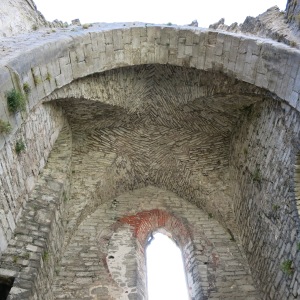
The roof of this cathedral in ruins shows the skill of the masons in building arched roofs.

Protective wall around Visby, Gotland.
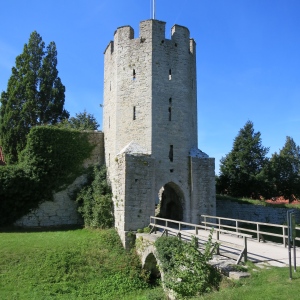
One of the tower entrances to Visby, Gotland. While there is not a traditional moat around the town, there is a low wet area. The wooden planks that make up this bridge would be removed when the town was expecting intruders.
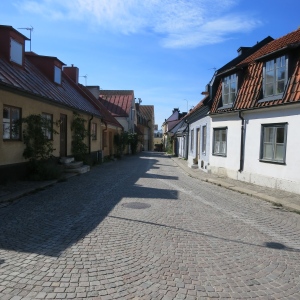
A residential street in Visby, Gotland. These houses are centuries old.

Visby, Gotland. Megan and Sven enjoying the view from one of Sven’s favorite places
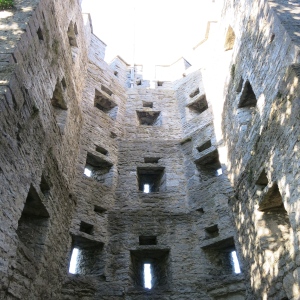
Visby, Gotland. Inside a tower on the protective wall. The wooden floors are gone but you can imagine what it may have looked like when occupied by lookouts and archers.

Visby, Gotland. The ruins of S:t Han are now an open-air restaurant.

Strike a pose in the ruins of S:t Olof, Visby.

Strike a pose in the ruins of S:t Olof, Visby.

Visby, Gotland. Wooden houses are preserved by a regular application of tar. After centuries, they acquire a bubbly texture. This one is slighty red, which means it has likely be painted with a mixture of tar and copper oxide.

Visby, Gotland. This street, called Fiskagränd, was the old fish market and is one of the most photographed places in all of Sweden. We were lucky to be there while the roses were still blooming

This is a båk, which was used before there were lighthouses to let sailors know they were nearing the mainland. Each one is unique in shape and design so you can locate your position on a chart relative to the båk.

One of the many small lighthouses that help sailors navigate safely. Note the swans in front of it for scale. Swans and large signets are all over the place right now.

Paying respect at the famous “Kejsaren” navigation marker. Someone put a crown on this decades ago and now sailors toast as they pass, offering thanks for a safe passage.

One of the many narrow passages between islands in the Baltic

Picture stones carved between 500-700AD on Gotland. Many of them are thought to contain cosmology.

Picture stones carved between 500-700AD on Gotland. Many of them are thought to contain cosmology.

Uppsala Cathedral, looking nearly the length of it. Note the elaborate gold pulpit in the middle.

Uppsala Cathedral, looking up

One of the many crypts on the floor of the Uppsala Cathedral. Note the dates 1620-1666. The elaborate carvings and rungs attached to many of these created trip hazards.

Jim’s vain attempt at speaking Swedish failed to bring life to this otherwise perfect statue.























